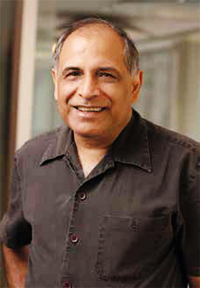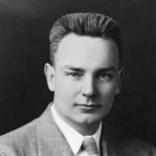Upmanu Lall
Sustainability Problem H2O

In the not-so-distant future, even those of us who take for granted that a turn of a tap will produce a flow of water may be faced with the problem one billion people in arid and semiarid regions already experience: no clean drinking water.
While we do live on a water-covered planet, only 3 percent of that water is fresh. That supply is found in glaciers and ice, in rivers and lakes, and below the ground. Groundwater, the source we depend upon for drinking, producing food, and cleaning, is being depleted and polluted, and climate change, the force that governs where and when water is available, is conspiring to shrink fresh water supply worldwide.
“We are in the middle of a dramatic global water crisis that is silently progressing,” warns Upmanu Lall, the Alan and Carol Silberstein Professor of Earth and Environmental Engineering and director of the Columbia Water Center, a unit of the Earth Institute that Lall helped found in 2008. “While climate change is expected to exacerbate these problems in many places in the world, our current use pathway leads to perhaps the most significant resource sustainability problem that humanity faces today. The recognition of this challenge is still limited, since people think about water place by place rather than by what is happening globally.”
To find a fix, Lall is tackling water sustainability on multiple fronts: hydrology, climate dynamics, water resource systems analysis, and risk management. He has spent a career honing his expertise in statistical and numerical modeling of hydrologic and climatic systems, and water resource systems planning and management. The outcome has resulted in pioneering statistical methods and their application to the prediction of hydrologic and climate conditions, and advanced tools for decision analysis and risk management.

Columbia Water Center’s America’s Water Initiative has mapped water risk for the U.S. (Image courtesy of NASA)
How does math and modeling help with sustaining a natural resource like water? Consider Lall’s statistical prediction model for river flow in northeast Brazil.
“The wet season there is January through May, and we can forecast the water that will be available in that season in the previous July. Our novel algorithm uses as predictors Atlantic and Pacific Ocean climate conditions that were identified as potential important determinants of the January–June climate,” Lall explains.
The model’s accuracy is comparable to what other models achieved in December, just before the start of the wet season. Having the information six months earlier helps in decision making to allocate water in the regional reservoirs to minimize loss due to evaporation and spillage, provide water or save water in anticipation of the future conditions, and improve the area’s economic performance relative to what would be expected in a cycle of severe droughts in the region.
“Nearly four million people, plus farms, industries, and cities are served by the systems in which we put this forecasting and decision-making system in place. In effect, we have created a system for adaptation to a changing climate in one of the most extreme climate regimes in the world,” he says.
Greening Engineering Herbert Kellogg Alumnus and Former Faculty

When the bequest of Henry Krumb (Class of 1898) reinvented the School of Mines (now also known as the Department of Earth and Environmental Engineering) in the late 1950s, the industry and Columbia Engineering’s curriculum were nearing the end of an era. In years to come, with evolving understanding of environmental sustainability, the focus would necessarily shift from maximizing extraction techniques to responsibly stewarding natural resources for the long term.
Herbert H. Kellogg BS’41, MS’43 was an early and eminent advocate for systematizing best practices to preserve the environment. A leading expert in minimizing waste and runoffs at mining sites and more efficiently processing a variety of minerals, he helped shepherd the field’s transition to its modern form.
After a few years at Penn State, specializing in mineral dressing and rising rapidly to lead their mineral preparation division, Kellogg returned to Columbia in 1946 to join what was then the Department of Mines, Metallurgy, and Mineral Engineering. Concentrating on extractive metallurgy, he became a full professor in 1956 and served as department chair for many years, beginning in 1968. He published extensively on improving extraction techniques, perhaps most prominently in chlorine metallurgy, and was widely renowned for his ability to unite theory with practical industry needs.
In 1978, Kellogg was elected a member of the National Academy of Engineering. He taught at the Engineering School for 44 years, earning the Great Teacher Award in 1982. He was also a highly active member of the American Institute of Mining, Metallurgical, and Petroleum Engineers. After his retirement as the Stanley Thompson Professor Emeritus of Chemical Metallurgy in 1990, Kellogg continued to write passionately about engineers’ responsibility for the environment. His imprint remains apparent in the ongoing work of today’s Department of Earth and Environmental Engineering.
